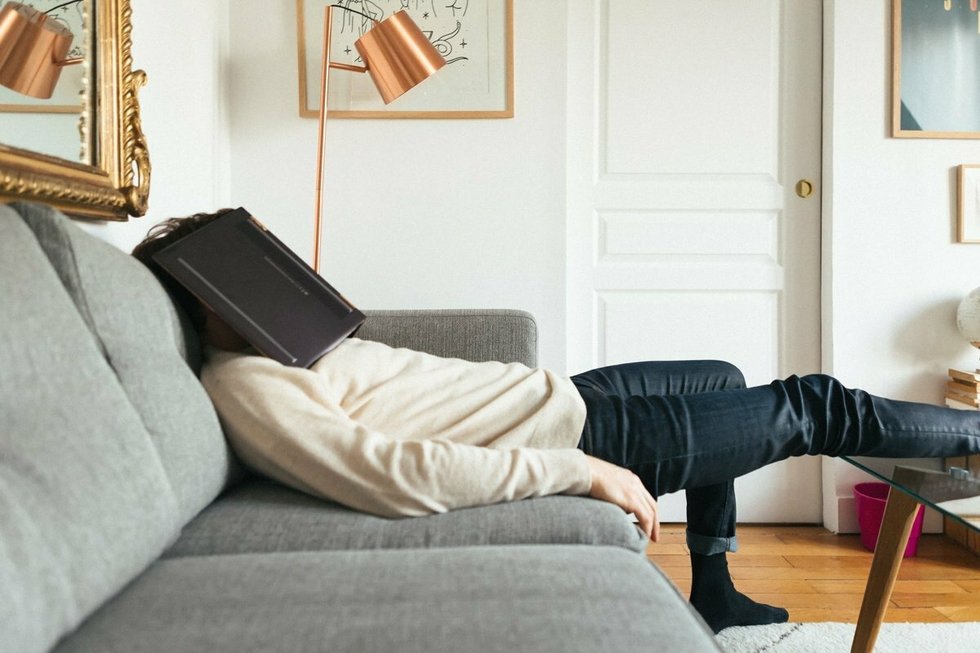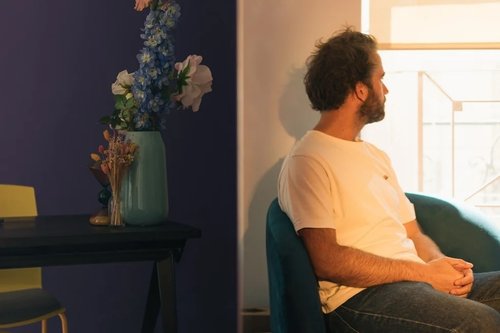Winter blues: dealing with SAD while working from home
Dec 01, 2021
5 mins


Journalist
As the days get shorter and the nights darker, it’s only natural to want to slow down and snuggle up indoors. If the feeling is so strong that it is interfering with your life and even feels “like hibernation”, however, then you may have the winter blues, according to the National Institute of Mental Health. It’s more common that you might think: research has found that 5% of the US population suffers from some level of seasonal affective disorder (SAD). These could range between SAD-specific symtoms or major depression, which means that a lot of us are struggling to some extent.
Although there are no figures yet on the effects of SAD during a winter with COVID-19 restrictions, it’s safe to say that it makes working from home that much more difficult. Even in spring, when the seriousness of the coronavirus emerged, happiness levels plummeted from 31% to just 14% citizens being classified as ‘very happy’, according to a study conducted by NORC at the University of Chicago
With so many of us feeling bad, how do you know whether you have a genuine problem? And what can you do about it? To find some answers, we spoke to Dr Mark Winwood, clinical lead for mental health services at AXA Health.
SAD is a type of depression with a seasonal pattern and it can affect mental health in different ways, depending on its severity, according to Dr Winwood. Common symptoms include a persistent low mood and energy levels, lack of enjoyment in everyday activities, poor concentration, irritability and intense feelings of sadness that can extend to feelings of guilt and worthlessness.
With more severe SAD, symptoms often include losing interest in seeing others and having physical contact—exactly the opposite to what we need to be doing now. “Any symptoms can trigger other important factors such as changes to our sleeping, eating and exercise patterns, which can impact our overall mental health and wellbeing,” he said.
It didn’t occur to Andrea Schwam, a translator who now lives in Cheshire, that she might suffer from SAD until she left her home on Vancouver Island on Canada’s west coast for Ontario on the east coast. “I grew up in one of the rainiest parts of North America, so it wasn’t until I moved away that I noticed that the amount of sunlight outside affected my moods,” she said. “It can get really cold outside, like -35C with the wind chill. But with the clear sky and fresh white snow reflecting the sun, I felt instantly energised and positive. That would all change on days when the temperatures rose, the snow melted and became dirty sludge, and the skies darkened.”
The combination of lockdown, working from home and the lack of opportunity to get outdoors mean that many of us are finding life more challenging now, according to Dr Winwood. “As we move in smaller circles and cancel those winter outings we’d usually look forward to, it’s inevitable there’ll be a heightened risk of mental health problems occurring, including symptoms of depression,” he said.
Those who fear they are sinking into depression should contact a medical professional. If you are just feeling the effects of working from home during the dark days of the winter lockdown, Dr Winwood has some good advice to help keep SAD in check. These are his top tips:
What can you do to keep SAD at bay?
Take regular exercise: It’s no fun forcing yourself out the door when it’s lashing rain, but just 20 minutes of activity can raise your heart rate enough to make you feel energetic and happier. “Incorporating healthy habits and routines into your day can give it some structure, which is particularly important in these current times,” said Dr Winwood.
Schwam finds it helps her: “This year I took the extra step of deciding to ‘make peace’ with the horrible Northern English weather by getting gear to make sure I’m comfortable jogging in the rain. I look silly, but I have a baseball cap and every article of clothing is synthetic . . . And honestly, I got caught in a downpour once and it wasn’t that bad! I came home laughing, which has to be good for mental health.”
Let in the light: Getting some natural daylight supports your circadian rhythm and can help you to sleep at night. “So whether you’re one of the many now working from home, or if you continue to commute to your workplace, try to make time to get out during the daylight hours,” said Dr Winwood.
Enjoy your sleep: Quality sleep is important so cut down on any stimulants such as alcohol or caffeine, he advises. “They can disrupt your body clock and impact the quality of your sleep,” he said. Put the screens aside as it gets closer to bedtime too.
Stay connected: Reach out to your friends and family so that you can enjoy their company, be sociable and have something to look forward to—even if it’s long-distance. “Whether it’s via a phone, a video call, or a socially distant catch-up [guidelines permitting], having good connections among friends and family is a key contributor to our wellbeing and happiness,” he said.
Mind your diet: Don’t be tempted to fall into the trap of treating yourself with junk food just because you are feeling low. “Try to include healthier food in your diet. Typically, processed foods are high in sugar and they can affect your energy and mood,” he said. A sugar high will be followed by a mood crash.
Seek out serotonin to boost your mood: Soaking up the sunshine is a great way to get your serotonin fix, but when that just isn’t available, there are a number of foods that support the body’s serotonin production, according to Dr Winwood. These include popcorn, oatmeal, nuts, eggs, vegetables, fruit, peanut butter and cottage cheese.
Be mindful of your home environment: Take inspiration from the Danish idea of hygge. As we continue to spend more time at home, you might want to consider ways to ‘nest’ and make your space trigger feelings of relaxation, be it through candles, plants, soft blankets or pillows.
Seek help if you feel overwhelmed: There are a number of ways to treat SAD that you can explore, including light therapy, cognitive behavioural therapy (CBT) and antidepressant medication, according to Dr Winwood. Light therapy involves sitting with a light box shining on you for about 20 minutes a day. The intensity is recorded in lux and for SAD, the typical recommendation is to use a 10,000-lux light box. This has worked well for Schwam. “When it gets gloomy out, I tend to stay inside and feel sorry for myself,” she said. “Last year, I finally got a light therapy box which I put next to my computer. The lamp is great because I can feel it ‘jolt’ my brain, in a good way of course, when it’s dark and I’m working.”
Working from home on dark days when there is no real reason to go out can affect your mood. Schwam finds that using a lamp and taking exercise is a good combination. “They work quite well together,” she said. The key is to find what works for you. Dr Winwood said: “Remember that there is no one-size-fits-all solution to mental health. Your journey is personal, and you need to do what’s best for you.” So, if you are feeling the effects of the gloom during this lockdown, take heart: there are many simple lifestyle tweaks and therapies that can help you to get through the winter happily.
Photo: WTTJ
Follow Welcome to the Jungle on Facebook on LinkedIn and on Instagram and subscribe to our newsletter to get our latest articles every day!

More inspiration: Remote work

Office FOMO? New employees may be missing out on career growth opportunities
Young employees working remotely may be missing out on key career growth opportunities—are the trade-offs worth it?
Oct 31, 2024

The do's and don'ts of working remotely on vacation
Can you truly combine work and vacation? With remote working becoming more popular, many are exploring their options.
Jul 18, 2024

Can remote work and parenting coexist?
Remote work is a godsend for many parents, but that doesn't mean it's easy. How can you make working from home work for you?
May 15, 2024

Where do freelancers fit into the new fractional world of work?
The shifting tech job market is fueling the rise of fractional work and transforming traditional employment …
Jan 29, 2024

Why I chose to go back to the office
Although remote work provides flexibility and autonomy, some employees are choosing to go back to the office. To find out why...
Jan 03, 2024
The newsletter that does the job
Want to keep up with the latest articles? Twice a week you can receive stories, jobs, and tips in your inbox.

Looking for your next job?
Over 200,000 people have found a job with Welcome to the Jungle.
Explore jobs